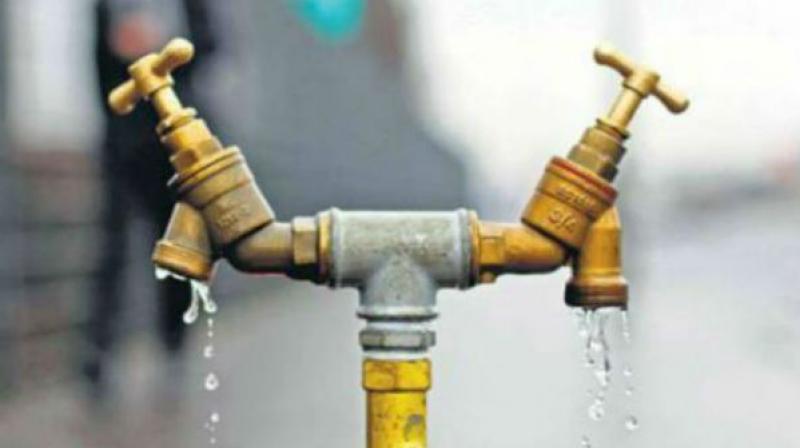Kolleru to get 5 TMC drinking water
Move to help 10 lakh people in 250 villages with their drinking water needs.

Vijayawada: The state government has decided to release five TMC water to Kolleru through Budameru, to address the drinking water needs of Kolleru abutting areas like Mudinepalli, Pedana, Gudivada, Kailaluru and surrounding suburb areas. This measure will address drinking water needs of around 10 lakh people in around 250 villages.
The decision taken in-principle will be declared shortly, according to a senior bureaucrat. Krishna and West Godavari district collectors have done exercise on this issue and submitted a detailed report to the state government.
Following the diversion of Budameru flood waters to Pattiseema, Kolleru Lake is badly affected and the abutting ‘Vannamei’, prawns ponds have contaminated Kolleru lake with salt waters.
Chicken waste is being dumped into these ponds as feed for the prawns, which leads to contamination of the waters.
Following representation from the people living near Kolleru, Chief Minister N. Chandrababu Naidu took the decision to release five TMC of water from Pattiseema through Budameru, which would protect the Kolleru lake from not becoming too salty.
The brackish waters had an adverse impact on genuine farmers, according to an agriculture officer, of West Godavari district.
There are 26 lakes like Kolleru across the country and the Supreme Court has directed the states to deal with the issue. The AP High Court also issued notices to collectors of West Godavari and Krishna districts and secretaries of Revenue and Forest departments to take measures to protect the Kolleru lake.
The issue started after Budameru was diverted to Pattisemma. “Now following the diversion of Budameru to Pattiseema, the brackish waters are affecting groundwater in and around Kolleru, resulting in the water becoming salty,” Darapuneni Satyanarayana, a farmer, observed.
Some Vannamei prawn farmers are also dumping chicken waste into the ponds, which is spreading fungus and damaging underground waters of the abutting areas of Kolleru. These factors can’t be ignored and need to be addressed immediately, said a farmer.
Dip in Vannamei yield may hit Kolleru’s future
The current major concern of Kolleru Lake — Litopenaeus Vannamei (whiteleg shrimp) — is the most commonly cultured shrimp in Latin America and South-East Asia. India, having 1.24 million hectares of brackish water area, is the second largest shrimp producer in the world, with Andhra Pradesh being India’s largest vannamei farming area. Currently, the state’s L. vannamei aquaculture is facing different issues and challenges to achieve sustainability related to diseases outbreaks, lack of availability of quality seed, high feed costs, unauthorised farming, international price fluctuations, and less demand in the domestic market, and others.
The state has 974 km of coastline and 1,75,000 hectares of brackish water. Shrimp farming in Andhra Pradesh started as an initiative of the Government of India with a study of brackish water fish farming in the late 1970s.
In 2001-2002, fresh water prawns faced disease outbreaks that affected the state’s production significantly. This is when L. vannamei was proposed as an alternative species due to their disease resistance and tolerance to high stocking densities, low salinity and temperature, as well as their high growth rate.
